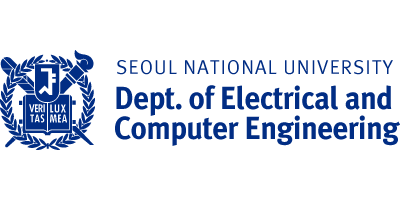Professor Hyuk-Jae Lee on why there is a need to train skilled labor in the field of semiconductors [Hyuk-Jae Lee’s Chip Behind] (Seoul Economics Daily, 2022.07.16)
◆ Hyuk-Jae Lee, a professor at the SNU Department of Electrical and Computer Engineering
Samsung taking risks and setting foot in new technologies
War for supremacy with TSMC, which chose a conservative strategy
Being ahead in the 3-nm process does not mean the end of the competition
Securing skilled labor before a technological gap is formed is urgently required
Hyuk-Jae Lee, a professor at the SNU Department of Electrical and Computer Engineering
On June 30th, Samsung Electronics Foundry Division announced the mass production of the 3-nm process. It can be said that the production was 3 to 6 months ahead of TSMC, which plans the mass production to begin in the second half of this year. Many domestic media reported in a hopeful tone that Samsung Electronics’ semiconductor technology provided an opportunity to surpass Taiwan’s. On the other hand, a majority of the Taiwanese media reported that Samsung’s progress was not much of a big deal. They mentioned how Samsung has yet to secure a major customer, while TSMC is preparing the mass production of the 3-nm process for major customers such as Apple. Let’s study the history of the technological competition between the two companies to predict whether Samsung Electronics will take the lead by leveraging on the earlier mass production of the 3-nm process, or whether TSMC still has the lead over Samsung.
When Samsung was working on the 7-nm process around 2017, Samsung developed a fabrication process using a piece of new equipment called EUC before TSMC. On the other hand, TSMC used existing equipment for the 7-nm process and applied the EUV process from the next generation onwards to reduce the risk that comes with applying new equipment. TSMC’s strategy succeeded, and it started the mass production of 7-nm chips before Samsung Electronics and was able to secure many customers. Since then, TSMC’s dominance over Samsung Electronics persisted.
Going back to 2014, Samsung Electronics developed semiconductors with a new structure called FinFET in the 14-nm process and succeeded in commercialization before TSMC. As a result, Samsung could bring in some of Apple’s demands and achieve great success in securing other major customers such as Qualcomm.
At the inflection point of semiconductor technology, Samsung introduced new technologies first, and TSMC was one step slower. Introducing new technologies could result in great performance gains, but there is a risk of having to wait a long time for the technology to stabilize. TSC, which now has a market share of 50%, adopts a conservative strategy while Samsung, a follower, takes risks and challenges new technologies head-on. In conclusion, it can be said that TSMC’s strategy worked in the 7-nm race, and Samsung’s strategy worked in the 14-nm race.
In the current 3-nm process development, Samsung has adopted a new structure called GAA, while TSMC worked based on the existing FinFET structure. The last change in semiconductor structures occurred during the 14-nm process development. Even when the EUV equipment began to be utilized during the development of the 7-nm process, the semiconductor structure remained unchanged. From a technical point of view, adopting a new structure for the 3-nm process is akin to the change that occurred during the 14-nm process development, and I hope that Samsung’s strategy will succeed this time as well.
However, even if one company were to gain an advantage over the 3-nm process technology, it is unlikely that the technological competition will completely end. There are cases in the past where technological supremacy was overturned in the next generation. In fact, at the beginning of this year, there were concerns that Samsung might be completely lagging behind TSMC. There were also reports that major customers such as Qualcomm moved to TSMC because of Samsung’s high defect rate. It was a difficult time for Samsung, which had lost a major customer during a situation where it was lagging behind TSMC after losing the 7-nm process race. However, by starting the mass production of the 3-nm process ahead of TSMC, Samsung gained an opportunity to overturn the competition, and the competition between the two companies is expected to continue for the time being.
Competition in the field of semiconductors is fierce, even being referred to as a war for supremacy, and the result of the competition has a great impact on the economy. Let’s assume that Samsung Electronics wins the current race, and its Foundry Division’s sales increase as much as TSMC’s sales would do. Considering the fact that TSMC’s market cap is larger than that of Samsung Electronics, a naïve calculation would show an economic effect would be Samsung’s market cap increasing to twice its current value. However, the reason why the long-term prospects of this war cannot be said to be bright is that Samsung’s manpower is sorely lacking in comparison to TSMC. According to some media outlets, Samsung’s Foundry Division is about 20,000 strong, while TSMC is about 60,000 strong. The fact that Samsung is competing with TSMC with such a disadvantage makes its employees appear even more brilliant. However, it is still an urgent task to nurture and secure excellent human resources before such gaps in manpower create a technological gap that cannot be closed.
Source: https://ece.snu.ac.kr/community/news?bm=v&bbsidx=52822
Translated by: Do-Hyung Kim, English Editor of the Department of Electrical and Computer Engineering, kimdohyung@snu.ac.kr


